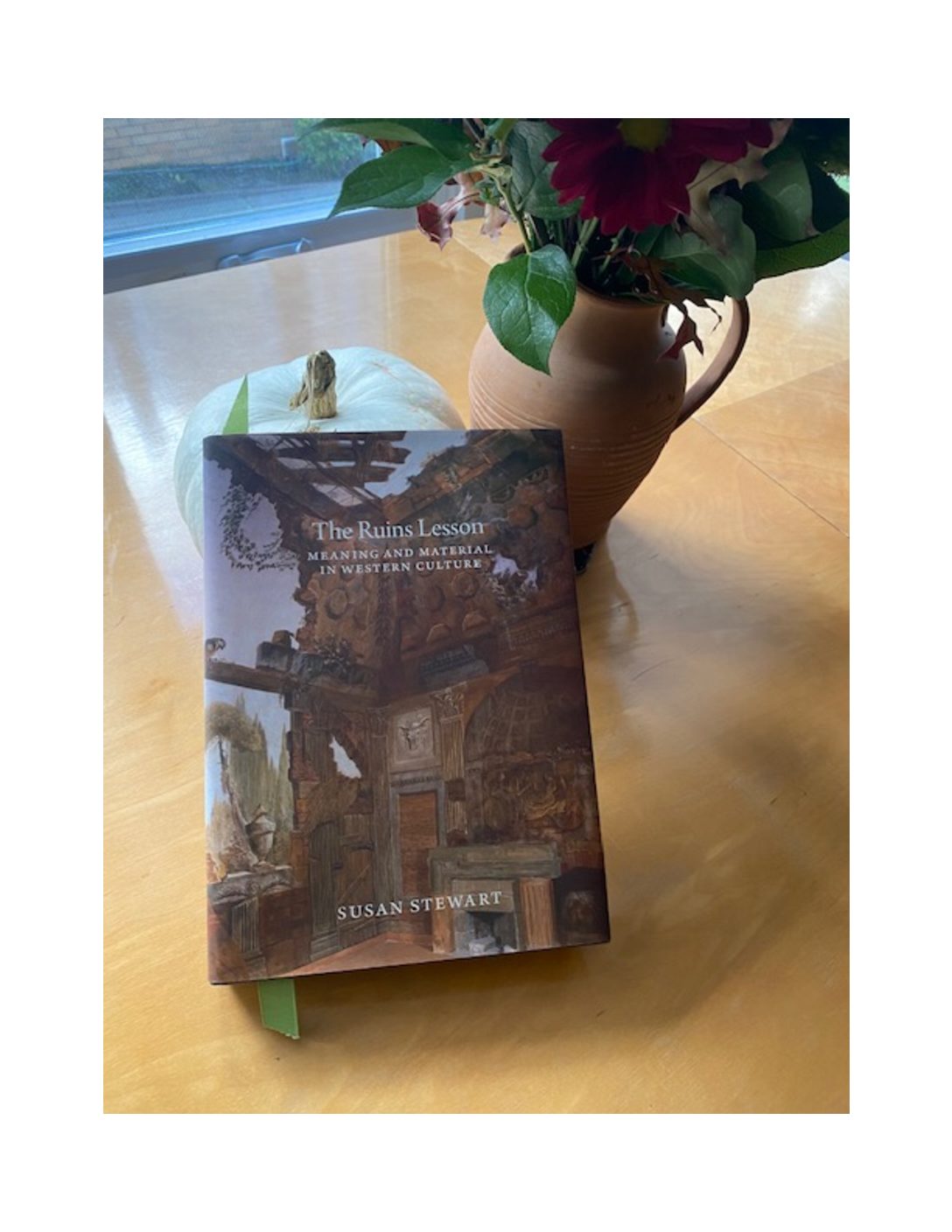The Ruins Lesson: Meaning and Material in Western Culture
By Susan Stewart
San Franciscans have long had a fascination with ruins, given our history of plagues, fires, and earthquakes.
Indeed, for many ferry riders, a major part of our waterborne journey is passing by the decaying structures of Angel Island, Treasure Island, and yes…even our tragic Alcatraz.
More than just a photo op, this part of our living landscape represents man’s folly and ambition, as few postcards may ever capture.
Published by The University of Chicago Press, it examines how ruins become so valued in Western culture and so central to our art and literature.
Covering a vast chronological and geographical range, from ancient Egyptian inscriptions to twentieth-century memorials, Susan Stewart seeks to answer this question as she traces the appeal of ruins and ruins images, and the lessons that writers and artists have drawn from their haunting forms.
Stewart takes us on a sweeping journey through founding legends of broken covenants and original sin, the Christian appropriation of the classical past, and images of decay in early modern allegory.
Stewart looks in depth at the works of Goethe, Piranesi, Blake, and Wordsworth, each of whom found in ruins a means of reinventing his art. Lively and engaging, The Ruins Lesson ultimately asks what can resist ruination—and finds in the self-transforming, ever-fleeting practices of language and thought a clue to what might truly endure.
Praise for the book includes this insightful reflection from Martin E. Jay, University of California, Berkeley:
“At the crossroads of transience and endurance, form and chaos, memory and materiality, ruins have been among the most poignant markers of the vain human struggle to resist the ravages of time. Drawing on an astonishing range of examples from the histories of art and literature, Stewart brings to their interpretation her unique gifts of analytic acumen and poetic evocation. The Ruins Lesson is a master class in cultural criticism, revealing the sweet melancholy that fuels our fascination with the shards, fragments, and torsos of things past.”

